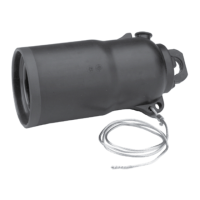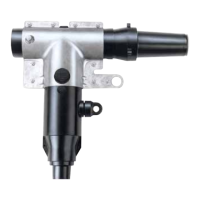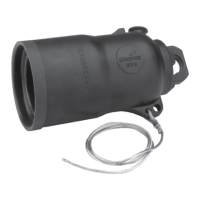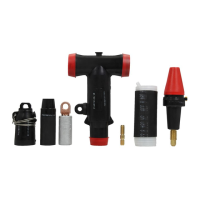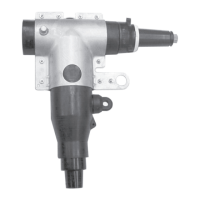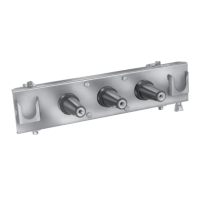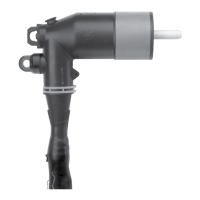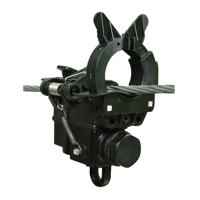3 OPERATING INSTRUCTIONS MN280067EN July 2017
Type MET electronic recloser control tester operating instructions
Operating procedures
The tester operating procedures have been grouped into:
1. Battery tests.
2. Control tests.
3. Recloser test.
Each group of tests is preceded by an INITIAL CONDITIONS
paragraph which specifies required settings for both the
control and tester. Make sure both are set to the INITIAL
CONDITIONS before starting. Upon completion of testing,
return the control settings to the desired operating
conditions before returning the control to service.
CAUTION
To avoid electrical/ shock and possible equipment
damage, the following grounding precautions must
beobserved.
Tester
The third-wire grounding pin of the plug on the input
power cord must be grounded securely. Use a three-wire
groundedoutlet receptacle which conforms to the latest
electrical code. If a plug adapter is used, be sure to ground
the pigtail lead securely.
Control
Make sure that the cabinet of the control is securely
grounded to an earth ground.
If the control is equipped with an accessory which requires
120- or 240 Vac power, make sure that the grounded leg of
the input power source is connected to the grounded input
terminal in the control. (Older controls without ac surge
protection may have neither terminal grounded. Controls
with surge modules very likely have one line grounded.)
Verify grounding of each terminal before applying ac power.
If a mismatch between grounds on the ME control and the
MET tester exists when the ME control is energized with ac
voltage, a buzzer within the MET Tester will sound. Correct
the problem immediately before proceeding.
Testing in-service control
A recloser control can be taken out of service for testing and
placed back into service without de-energizing the recloser
and interrupting the system. However, during the time the
control is out of service, system fault protection is lost.
CAUTION
Recloser misoperation. The control must be removed
from service prior to performing any maintenance,
testing, or programming changes. Failure to comply
can result in misoperation (unintentional operation) of
therecloser. T216.2
To remove the control from service
1. Place the Ground Trip switch to “BLOCK.”
2. Disconnect the recloser interconnecting cable at the
receptacle on the bottom of the control cabinet.
CAUTION
Hazardous voltage.Open CT secondaries can generate
high voltages.Contact withCT pins of the disconnected
cable can causeelectric shock and may result in
personal injury.Open reclosercontacts and open
disconnect switches before disconnecting
control cable. T204.3
To place the control back in service
1. Make sure the Ground Trip switch is in BLOCK.
2. Check that the battery is connected and all control
settings and plugs are correct, or programmed,
asapplicable.
3. All recloser controls other than Type Form 4A and Form
4B: operate the Manual Control switch to CLOSE to
make sure the control is in the home position; verify by
placing the test switch to LOCKOUT TEST; the Lockout
Indicator lamp should not light.
4. Reconnect the recloser interconnecting cable to the
receptacle on the bottom of the control cabinet.
5. Place the Ground Trip switch to NORMAL.
Battery tests
Form 2 and Form 3 family controls only.
The left side of the tester contains the metering and
associated switches for checking the battery and
battery-charging circuits. The battery test cable provided
with the tester is capable of checking battery voltage on all
Form 3 and Form 3A controls equipped with either two- or
three-battery test-terminal posts. For earlier Form 3 controls
(with two-battery test-terminal posts), a special battery test
cable—capable of checking both battery voltage and battery
charge/discharge rates—is available as an accessory. With
the addition of adapters to the special battery test cable,
the battery voltage and charge/discharge rates of all Form 2
controls (no separable battery plug and receptacle) can also
be checked. The adapters are included with the accessory
test cable.
Instructions for using the special battery test cable and
adapters are included in Appendix B, page 13.
Initial conditions
Control
Battery connected and control in lockout (verify with the
Lockout Test switch and/or Lockout Indicator, as applicable);
battery charging circuit de-energized. Refer to the applicable
control Installation Manual for specific information to
de-energize the battery charging circuit.

